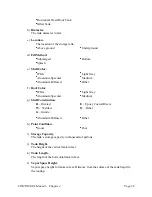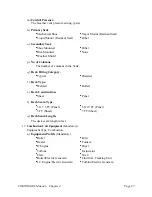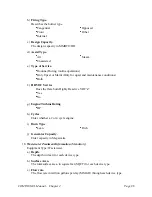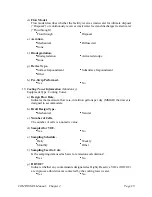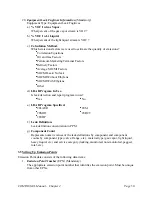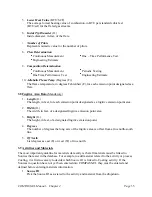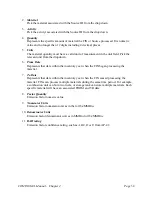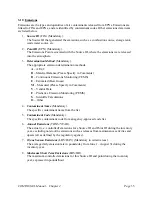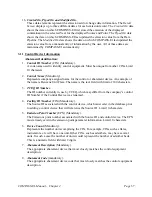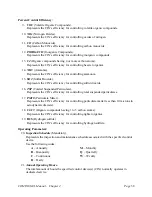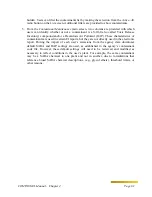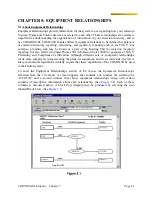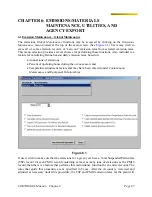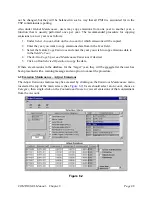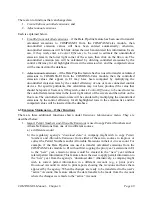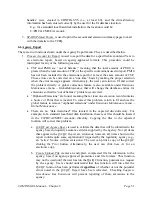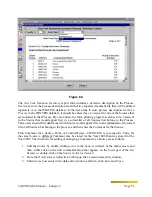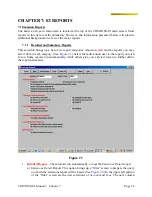
COMPASS-EI–Manual – Chapter 4
Page
40
CHAPTER 4: CONTAMINANT MAINTENANCE
4.1 About Contaminant Maintenance
Contaminant Maintenance
is accessed by a menu selection under the
File
menu item at the top,
left corner of the
C&C
screen. This feature allows users to edit the Contaminant information (not
emissions!) to make using the program more convenient. All headings on the display screen may
be used as sort keys simply by clicking on the
heading
to sort the list. To reduce the number of
items shown in the list, users can enter all or part of the
Contaminant Code
,
Contaminant Name
,
or
CAS Number
next to the filter line located near the top of the screen. The appropriate filter key
should also be selected to identify whether the information entered by the user relates to a
Contaminant Code, Contaminant Name, or CAS Number. If, for example, you wish to see all
contaminants with a name beginning with “ETHYL,” then the appropriate filter key selection
would be
Contaminant Name like
. Then type ETHYL in the blank to the right. The list may also
be filtered by
Criteria Pollutant Category
by making a selection from the Category filter
dropdown list.
There are five different editing functions that users may perform in Contaminants Maintenance,
as explained in the following paragraphs:
1. If emissions will be copied into the EI from an external database or spreadsheet, or from
the COMPASS-Calcs module, the COMPASS-Pipeline module provided by PDC Corp
will expect each Contaminant Code to be associated with the CAS Number under which
the emissions have been calculated and stored in the data table. This linking is only
required for users that will use the Pipeline module. Only emissions for which the CAS
Number and Contaminant Code have been associated will be copied to the EI emissions
database.
In COMPASS-Calcs, to link Contaminants with CAS Numbers, click on the
CASNo
field
and either enter the correct CAS Number, or double-click on this field to view CAS
Numbers that appear in the COMPASS-Calcs module. In cases where there is an exact
name match on both lists, the matching CAS Number will be highlighted automatically;
otherwise, a list of COMPASS-Calcs CAS Numbers will be displayed. The user may
double-click on any CAS Number in the list to insert the CAS Number into the
Contaminants data table for the selected contaminant.
2. From
the
Contaminant Maintenance
main screen (See
Figure 4.1
), the
Ozone Factor
, also
known as a temperature adjustment factor, can be input or edited for a contaminant.
temperature adjustment factors are used in Ozone Season daily rate emission calculations.
These calculations are performed during the Data Pipeline procedure and by a selection
in the
Emissions Maintenance
(Global) menu. A rate of 1.00 will result in a unit
conversion of tons/year into pounds/day of a contaminant for those sources that operate
25% in all seasons of the year. A rate of 2.00 will result in an emission rate two times
higher than would be calculated based on a simple conversion. Ordinarily, adjustment
factors greater than 1.00 will only be entered for volatile chemicals that evaporate more
rapidly in warm temperatures.

